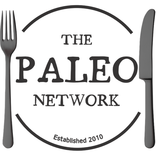Keeping It Paleo Whilst Travelling – Indonesia
I had intentions of being 100%, strict Paleo on my recent trip to Indonesia. However, it’s all very well deciding that in advance, but when I actually arrived in Indonesia, things didn't go quite to plan…
As I was travelling to lots of different, rural places in Bali, Lombok and the Gili Islands, food options could be quite limited. Most of the places I stayed offered breakfast options of things like pancakes (with banana or pineapple and topped with honey), fresh fruit (mango, papaya, pineapple and other tropical fruits) and toast and a boiled egg.
My initial approach was to order breakfast from the lunch menu – paying extra to get fish and vegetables, or eggs with a side of chicken and veg. This took quite some explaining and was met with some very baffled expressions. Unfortunately, after a few days I was struck down with the dreaded “Bali Belly” (if you don’t know, I'm sure you can guess!). It then occurred to me I was going against my first rule of travelling:
Eat what the locals eat!

I've travelled all around Asia following this rule and have never been ill. I've always noticed that the tourists who don’t try local food, but order Western dishes are usually the ones to fall ill. I guess because Western food that is rarely ordered, so it doesn't have such a quick turnaround. So, I prioritised “eating local food” above “eating Paleo”. In practice, this mainly meant including rice, as this is such a staple in Indonesia (and Asia generally). I also started to eat a lot of fruit – where as usually I only have one or two pieces a week.
Fortunately the food in Indonesia has a few important differences from a lot of Western food. Everywhere I went, the food was local. I had fish a few times, sitting by the lake or overlooking the sea that the fish came from. The rice came from the rice paddies next door. The eggs, from the hens that were roaming around next to where I ate. I was also very impressed to find that most food is cooked in coconut oil; but not shop bough coconut oil – home made coconut oil!

My Favourite Indonesian Paleo-ish Dishes
A great Indonesian dish that I had often was Satay. This is meat skewers, cooked over coals and flavoured with local herbs and spices and served in peanut sauce. So whilst the peanut (legume) sauce is not Paleo, the principles of the dish clearly are.
Soy is also quite strongly featured, as tofu or tempe – and whilst it is traditionally prepared (certainly not processed), it was easy for me to steer clear of it.
Despite the rice, I had Nasi Goreng (fried rice), several times, leaving the prawn crackers uneaten. Another popular local dish I enjoyed was Gado-gado, which literally means a mix. It contains lots of local vegetables and a peanut sauce with some delicate herbs and spices. I found quite a few dishes, such as Opor ayam, that were along the lines of a chicken curry – in coconut milk – a great Paleo option.
Whenever fish was offered, I found that a great option, as the whole fish was served, and they were locally caught instead of farmed and imported. Pepes Ikan is a great fish dish cooked in a banana leaf.
I really enjoyed the opportunity to try different fruit, that isn’t so readily available at home. Rambutans are a little like Lycees and were grown almost everywhere. I also tried jack fruit, snake fruit and fresh papaya.
So, my strategy of eating like a local worked well from a short-term health perspective in that I avoided food poisoning. But I found the change of diet hard going. On my Paleo diet, I can go for a long time before I get hungry, as my blood sugar levels remain stable. When I started to introduce so many (relatively) carbohydrates, I found that I would become extremely hungry and shaky – and have to eat every few hours – a clear indication of a drop in blood sugar levels. As much as I enjoyed trying so many local foods, it was good to return to my normal World, where I'm fortunate enough to be able to eat what I want to eat based on Paleo, rather than what is available.
What is your approach to nutrition when you’re travelling? Do you keep it Paleo? Have you been to Indonesia? Please share in the comments below!










